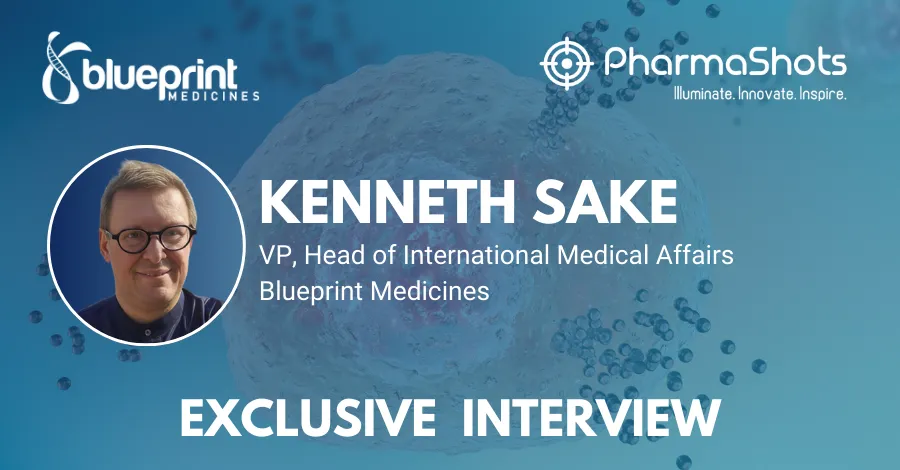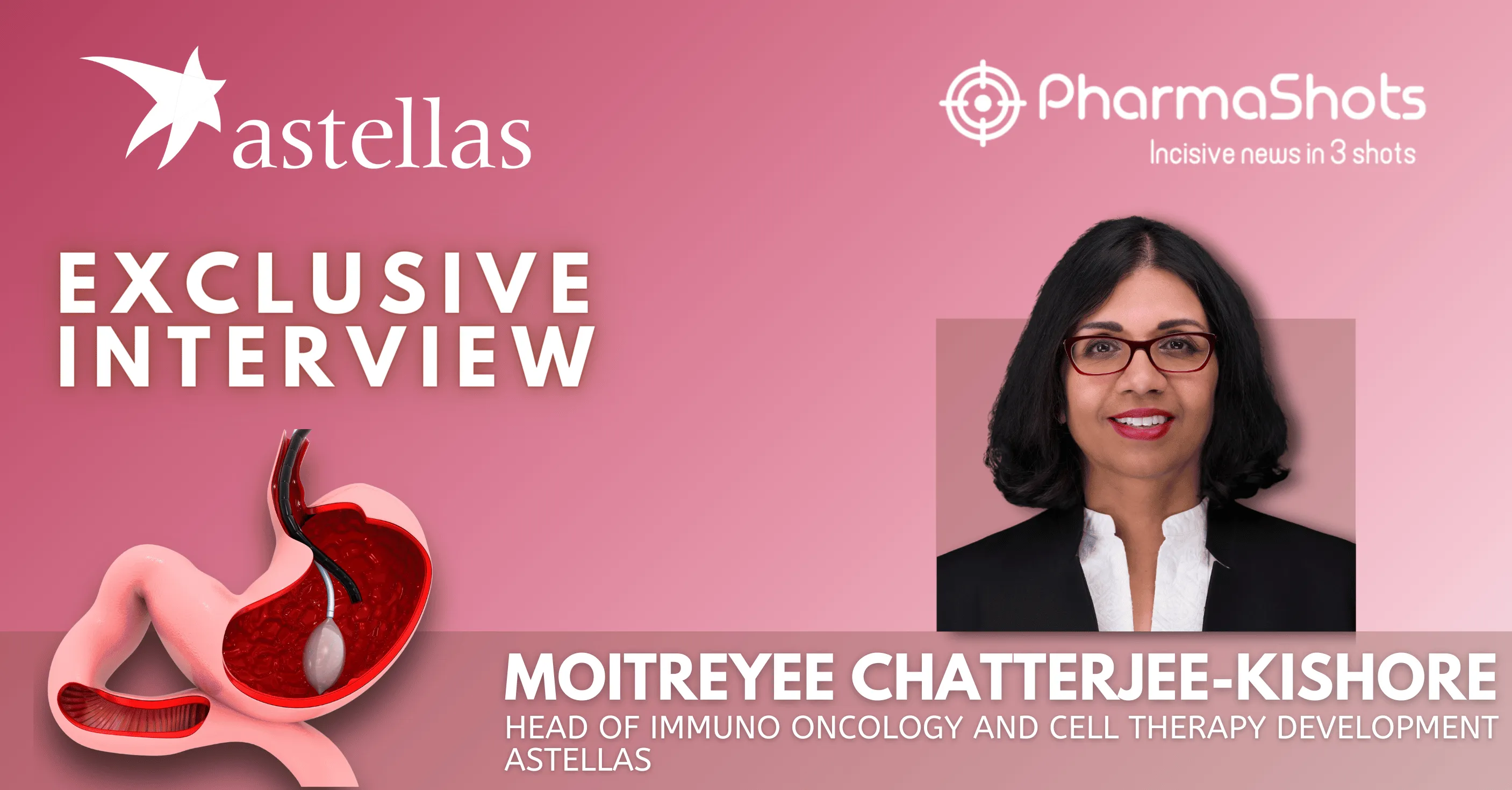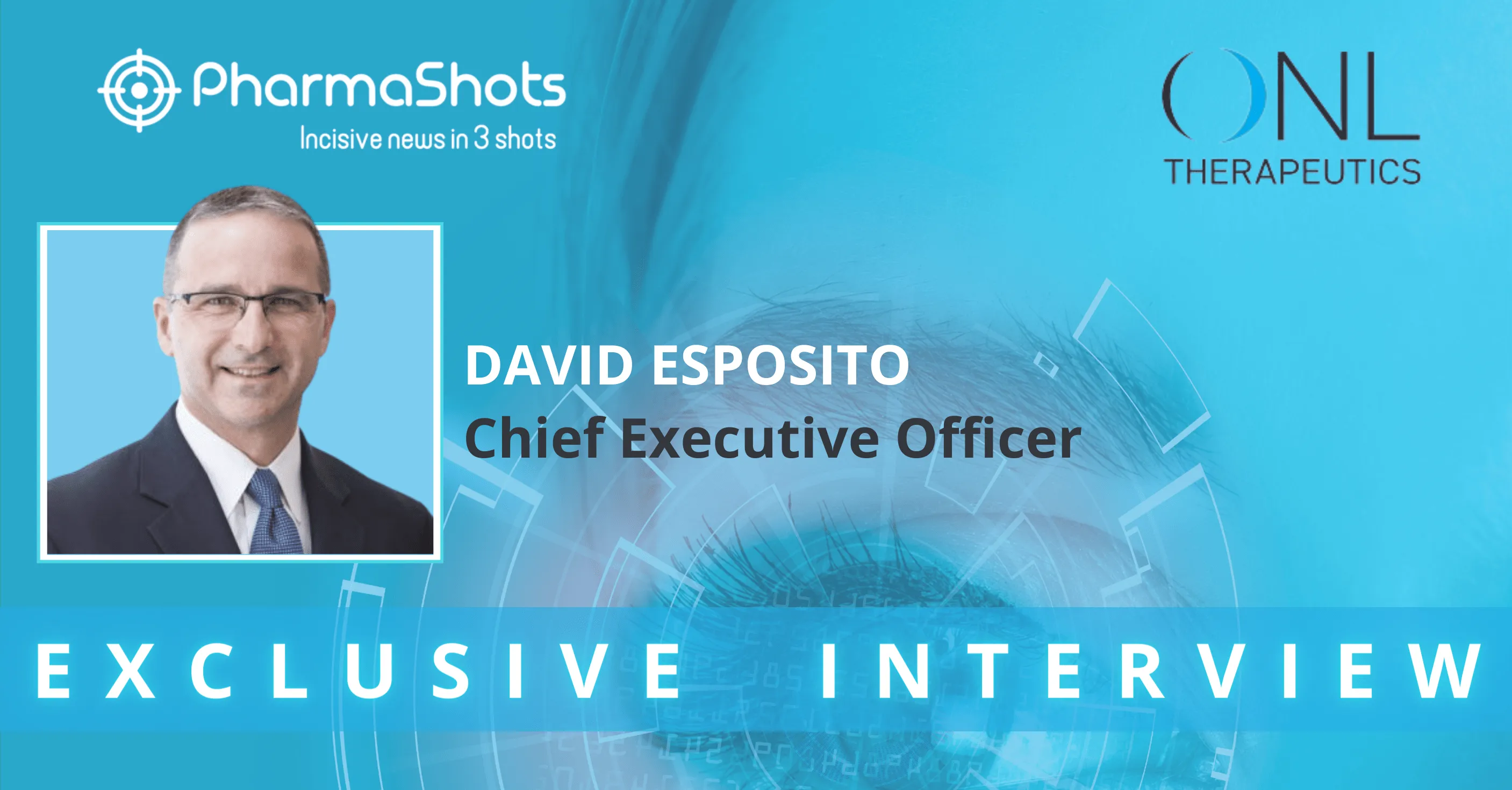
Barbara Klencke, CMO at Sierra Oncology (now GSK) Shares Insights on the Significant benefits obtained from the Pivotal Myelofibrosis Study
Shots:
- Barbara gave a comprehensive view of the P-III (MOMENTUM) clinical study results which evaluates its lead candidate in myelofibrosis
- Sierra is now acquired by GSK (completed on 1st July 2022) resulting in GSK commercializing this prime product once approved
- The interview outlines Sierra’s (now GSK) vision to develop transformative therapies for rare cancers
Smriti: Thank you so much for connecting with us, would you please start by discussing the key findings from the P-III (MOMENTUM) clinical study evaluation of momelotinib?
Barbara: The results from the pivotal MOMENTUM study were exactly what we had hoped to see. In the study, momelotinib achieved a statistically significant and clinically meaningful benefit on symptoms, anemia, and spleen size, while maintaining platelet counts in an incredibly difficult-to-treat patient population. This is significant as momelotinib is the first and only JAK inhibitor to demonstrate efficacy in three key hallmarks of myelofibrosis, without impacting platelet counts.
These findings support the potential for momelotinib as a treatment for myelofibrosis and that momelotinib may address a critical unmet need, particularly for patients with anemia.
Smriti: Would you please give our readers a comparative view of momelotinib vs danazol for the treatment of myelofibrosis?
Barbara: As previous clinical studies indicated a potential anemia benefit with momelotinib, we wanted to explore that potential benefit further. Danazol is commonly used as a treatment for anemia in patients with myelofibrosis, and there are no approved therapies for second-line treatment of myelofibrosis, so it was a logical choice as a treatment comparator in the MOMENTUM study.
The results of the study showed momelotinib was better able to improve symptoms, transfusion requirements, and spleen size than danazol. Momelotinib also demonstrated a comparable safety profile and trend towards better survival compared to danazol.
Smriti: As we heard, that the results from the P-III clinical study were promising, can you walk us through the results from this study? Also, please discuss its trial design.
Barbara: MOMENTUM was a global, randomized, double-blind Phase 3 clinical trial of momelotinib versus danazol in patients with myelofibrosis who were symptomatic, anemic and had been previously treated with an FDA-approved JAK inhibitor. The study was designed to evaluate the effectiveness and safety of momelotinib for the treatment of myelofibrosis as measured by improvements in symptoms, blood transfusions, and splenomegaly. The double-blind randomized treatment period compared momelotinib versus danazol over 24 weeks, after which time all patients were able to receive open-label momelotinib.
Mean baseline characteristics for all participants were Total Symptom Score (TSS) of 27, hemoglobin (Hgb) of 8 g/dL, and platelet counts of 144 x 109/L.
All primary and key secondary endpoints were met in the study. Specific efficacy and safety results include:
- Improvement in TSS of >50% at week 24 compared to baseline: 25% in the MMB arm vs. 9% in the control arm (p=0.009)
- TI rate at week 24: 31% in the MMB arm vs. 20% in the control arm (p=0.006; one-sided non-inferiority)
- SRR based on the improved splenic volume of >35% at week 24 compared to baseline: 23% in the MMB arm vs. 3% in the control arm (p=0.0006)
- SRR based on the improved splenic volume of >25% at week 24 compared to baseline: 40% in the MMB arm vs. 6% in the control arm (p=0.0001)
- Average TSS Change from Baseline: -9.36 in the MMB arm vs. -3.13 in the control arm (p=0.0014)
- Zero Transfusion Rate throughout the 24 weeks: 35% in the MMB arm vs. 17% in the control arm (p=0.0012)
- The most common Grade 3 or worse treatment-emergent adverse events (TEAEs) during the 24-week randomized treatment period were thrombocytopenia (MMB – 22%; DAN – 12%) and anemia (MMB – 8%; DAN – 11%)
- Grade 3 or worse infections occurred in 15% of MMB and 17% of DAN patients
- Overall, TEAEs led to the study of drug discontinuation during the 24-week randomized treatment period in 18% of MMB and 23% of DAN patients
- A trend toward improved overall survival during the 24-week randomized treatment period was seen with MMB vs DAN (HR=0.506, p=0.0719)
Smriti: How will momelotinib stand out from the crowd? What unmet need does momelotinib address for patients & HCPs?
“Current medications for myelofibrosis do not treat all aspects of the disease, and can even worsen anemia and platelet levels”
Barbara: We see a lot of potential for momelotinib, particularly with patients who have anemia. Current medications for myelofibrosis do not treat all aspects of the disease, and can even worsen anemia and platelet levels which may result in treatment discontinuation or reduced dosing.
Anemia management remains a critical unmet need for patients with myelofibrosis. Anemia of myelofibrosis is strongly correlated with reduced quality of life and a decrease in overall survival. At the time of initial diagnosis, approximately half of patients with myelofibrosis are already anemic, with the vast majority progressing to transfusion dependency over time, consistent with the MOMENTUM experience where approximately 85% of enrolled patients were receiving transfusions.
Momelotinib is an investigational, potent, selective, and orally bioavailable ACVR1/ALK2, JAK1, and JAK2 inhibitor. The findings from the MOMENTUM study support the potential for momelotinib as a treatment for myelofibrosis patients with anemia. Importantly, momelotinib is the first and only JAK inhibitor to demonstrate efficacy in three key hallmarks of myelofibrosis – symptoms, splenic response, and anemia – without impacting platelet counts.
Smriti: How do you intend to raise patient awareness about Sierra’s myelofibrosis treatment option?
“Sierra has actively supported a variety of educational and outreach efforts through our Medical Affairs and Commercial teams”
Barbara: Both patient and physician awareness is critical for any treatment. Sierra has actively supported a variety of educational and outreach efforts through our Medical Affairs and Commercial teams. In April of 2022, Sierra entered into an agreement to be acquired by GSK. The deal is expected to close in the third quarter of 2022 or before – which is prior to the expected FDA decision for momelotinib. If momelotinib is ultimately approved, we expect GSK to leverage its strong commercial and medical expertise in oncology and hematology to raise awareness about the treatment among patients and their doctors.
Smriti: Elaborate on the added information on momelotinib provided by Sierra at the recent ASCO and EHA meetings. How will this presentation help in the future commercialization of momelotinib?
Barbara: At ASCO and EHA, in addition to presenting the full data set from the MOMENTUM study, a subset analysis was presented which explored the efficacy and safety of momelotinib in thrombocytopenic patients -- specifically, those with baseline platelets ≤150 x 109/L, <100 x 109/L (which represents roughly half of the overall MOMENTUM patient population), and <50 x 109/L.
Momelotinib demonstrated a benefit on symptoms, anemia, and spleen size in each of the thrombocytopenic subsets while maintaining platelet counts – results that are consistent with those seen in the overall intent-to-treat MOMENTUM population. Momelotinib also demonstrated comparable safety and favorable survival profile compared to danazol in these thrombocytopenic subjects.
The findings support the potential for momelotinib as a treatment for myelofibrosis in patients with platelets as low as 25 x 109/L.
Specific efficacy and safety results for patients with a baseline platelet count of ≤150 x 109/L include:
- TSS of >50%: 30% in the MMB arm vs. 12% in the control arm
- TI: 32% in the MMB arm vs. 19% in the control arm
- SRR >35%: 22% in the MMB arm vs. 5% in the control arm
- SRR >25%: 40% in the MMB arm vs. 7% in the control arm
- TSS Change from Baseline: -10.7 in the MMB arm vs. -3.8 in the control arm
- Zero Transfusion Rate: 31% in the MMB arm vs. 12% in the control arm
- The rate of Grade 3 or worse adverse events was 15% in the MMB arm and 17% in the control arm
- The most common Grade 3 or worse treatment-emergent adverse events (TEAEs) were thrombocytopenia (MMB – 31%; DAN – 16%) and anemia (MMB – 7%; DAN – 14%)
- Grade 3 or worse bleeding events occurred in 9% of MMB and 5% of DAN patients
- Overall, TEAEs led to the study of drug discontinuation in 15% of MMB and 19% of DAN patients
- A trend toward improved overall survival was seen with MMB vs DAN
Smriti: Has Sierra started to plan for patient support programs? What could be key criteria Sierra is keeping in mind while addressing such programs?
Barbara: Ensuring access to important medical treatments remains a high priority across our industry. Sierra has full intention of providing necessary patient support to ensure patients have the assistance they need to not only navigate a complex healthcare system but also identify financial resources when needed in order to access momelotinib.
Smriti: As you are walking towards the end of the P-III clinical study, what timelines do you have in mind for registering momelotinib for approval (the US, EU, etc.)?
Barbara: Sierra announced the submission of a New Drug Application with the FDA on June 17, 2022. Momelotinib has been granted Fast Track designation by the FDA. Assuming the filing is accepted, a decision from the FDA is anticipated in 2023.
We anticipate an MAA submission will be completed approximately six months after the NDA submission.
Smriti: We believe you must have started on HCP education and engagement programs. Could you please discuss some of them? (Also please share some collateral material if you can)
Barbara: The acquisition of Sierra by GSK is expected to close in the third quarter of 2022 or before – prior to the expected FDA decision for momelotinib. If momelotinib is ultimately approved, we expect GSK to leverage its strong commercial and medical expertise in oncology and hematology to engage and educate HCPs on the benefits of this treatment in myelofibrosis.
Smriti: What’s next for momelotinib after its approval in myelofibrosis? Are there any more indications in mind?
Barbara: We believe there is so much potential for momelotinib – as a standalone option and potentially even as a combination therapy. If momelotinib is ultimately approved, we expect GSK to leverage its strong commercial and medical expertise in oncology and hematology to explore further the potential of momelotinib, which we believe could be a cornerstone therapy in myelofibrosis. One potential opportunity which could be explored is combination therapy with momelotinib and a BET inhibitor.
Smriti: Thank you for an informative interview! We at PharmaShots appreciate your valuable time and presence
About the Author:

Barbara Klencke is the Chief Medical Officer at Sierra Oncology(now GSK). Dr. Klencke is an oncology drug developer with substantial contributions to the development and approval of numerous significant oncology products. She has played a major role in the successful development, approval, and early commercialization of a number of important oncology products. She completed Internal Medicine and Hematology/Oncology training at the University of California, San Francisco. Dr. Klencke holds a BS from Indiana University and an MD from the University of California, Davis.
Related Post: Kyle Forcier, Senior Director of Life Sciences Product Marketing at Model N Shares Insights on How Model N Helps Life Sciences Companies Navigate Greater Compliance Pressure
Tags

Senior Editor at PharmaShots. She is curious and very passionate about recent updates and developments in the life sciences industry. She covers Biopharma, MedTech, and Digital health segments along with different reports at PharmaShots.














